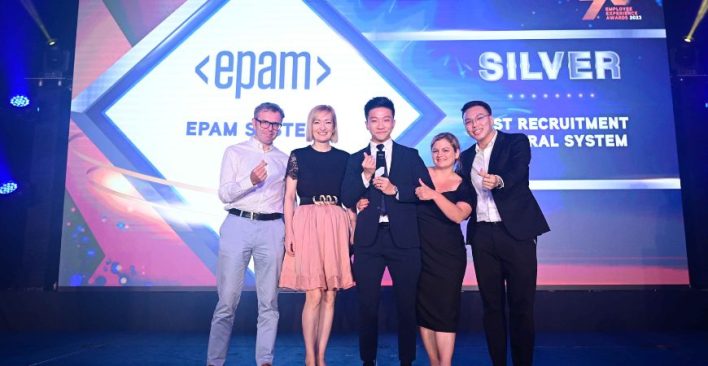Hacking Your Candidate Funnel

If you are an employer, which of the following statements rings true to you when it comes to attracting candidates?
- We’re not a household name, and struggle to find talent
- We’re a big brand but we’re just not able to source or hire talent
- Our competitors seem to find people but we can’t
- Not being able to find the right people is impacting our business
- Our recruitment marketing spend is huge with little to no ROI
I could list plenty more statements; we’ve all been there and done that. But what are we doing about it? Measuring source of hire? Throwing more money at job boards or LinkedIn? Hire a third party for creative and a brand campaign? How effective is all this?
The last six months I’ve sat next to the HealthEngine Growth Marketing Team. This team’s core focus is to increase the number of consumers coming through the funnel and make the sticky. Think of them as a modern day, funky group of mad scientists running experiments across the interwebs, working out ways to get more people onto the HealthEngine platform and stay. Read more on what they do here.
What does this have to do with recruitment? Well, we’re also all about funnels. As crude as it may sound, we find and identify talent and manage them through a funnel. We just use different tools and jargon which quite frankly don’t work very well, and we keep doing it over and over again.
Am I saying we should all go out and hire a growth marketer or growth team? Not at all. What I am saying is we need to learn and apply a growth mindset to attracting talent. Check out ‘Hacking Growth’ by Sean Ellis or ‘Growth Hacker Marketing’ by Ryan Holiday.
If you don’t have time to read them, I’ve put together a few blogs on hacking your candidate funnel, and today’s blog is about one specific idea: stop sending default templates to candidates.

Personalised Candidate Emails
Start sending individually crafted emails to specific candidates. I’m not talking about War & Peace, just a line or two to demonstrate an interest in the individual. Yes, this takes time.
The Opening Subject
“Hot Job – Civil Engineer” OR “We’re hiring Digital Marketers” etc.
Firstly, think about how many emails and or InMails the person you are approaching is getting daily or weekly and what might be in the subject line. Now go and speak to people in your business who are in the roles you are trying to hire. Yes, that’s right, go and speak to them. Don’t stop there, speak to current candidates as well. Research, research, research. Ask them:
“How likely are you to open and respond to an email with the following subject heading?”
Think of a few creative openers that aren’t specific to a vacancy. Then ask;
“Of the following which are you more likely to open or respond to?”
For example, at HealthEngine I started experimenting with the following subject headings:
“How do we create better healthcare experiences?”
“How can you help make healthcare more accessible?”
I had three different personalised templates with three different subject headings. I started measuring the success of each of these emails. Unfortunately I don’t have specific numbers for you as I left whilst these experiments were running, but anecdotally, open rates were higher with these experiments. I’d encourage you to try your own.
The Body
Now we get into the meat of the message. Here are a few examples which you might include in the body of an email depending on the type of role you are recruiting;
“Some of the causes you list in your profile are very social and community orientated, this aligns well to our business and what we are trying to achieve”
“Your public GIT repository is full of PHP, which is our primary language. We’d love to know more about what you’re doing under the hood”
“I see you love to create your own games, nice. Check out this game that was recently launched by one of our engineers, John. We love and support people who are passionate about what they do”
Really delve into the persona of the person you are approaching to solicit the response you want. That means paying close attention to their professional and social footprint online.
The Close
I like to close out with a “John, appreciate your time and look forward to hearing from you. I’ll follow up with you in a weeks’ time if I don’t hear back” and make sure you follow up! My success with open and response rates with a follow up email skyrocketed. In some instances, over 70 percent opens and responses depending on the role. I was using a great tool called Lever Nurture which automated the follow up emails if no response came within a week. Saving me time in manually following up which you had to do in LinkedIn Recruiter.
What about hyperlinks? Should you include a hyperlink in your email? I experimented with this. Multiple links, links to videos, links to blogs etc., but noticed that links were only clicked about 15 – 20 percent of the time. I think they are worth including if they add value, but it’s unlikely to convert into a response based on these lower numbers.
Yep, this all takes time. The number of emails you send out will decrease, but your conversion rate will increase which is part of having a growth mindset. Would you rather send five emails and have three-plus respond or send 10 emails for two people to respond? I know what I’d do.
In Summary
Should I InMail or email them directly?
I recently looked at my own numbers whilst at my previous employer. I had sent 71 InMails via LinkedIn Recruiter (71 individuals), and 71 emails directly to candidates’ email (71 individuals) addresses I had found using a host of different Chrome extensions.
The result was overwhelmingly in favour of the direct approach to a person’s email address. Over 80 percent of emails were opened and over 50 percent responded. LinkedIn InMail rate was less successful. Only 30 percent of InMails were opened and about half of those responded. What I can’t tell you is if the candidate’s personal email was the same email they used for their LinkedIn profile. If it is, then WOAH, is that LinkedIn Recruiter seat really worthwhile?
So what’s the takeaway then?
• Experiment and measure different email approaches consistently refining to your target audience;
• Subject headings are just as important to capture attention;
• Personalise your email content;
• Follow up emails will increase response rates;
• Conversion rates will make or break you.
If you have more tips or success stories in relation to candidate emails that you would like to share with others, then please feel free to comment below.
This is part 1 of a series of articles on improving your candidate funnel. For more tips, strategies and ideas, check out parts two, three, and four.
Images: Shutterstock
How can you make sense of your Talent data AND be able to tell an effective story about it? Find out at the People Analytics & the Future of Knowledge conference!

Related articles
2 Responses to “Hacking Your Candidate Funnel”
Leave a Reply
Sign up to our newsletter
Get a weekly digest on the latest in Talent Acquisition.
Deliver this goodness to my inbox!




Stan nice post as usual. I think what you are talking about when targeting the high value talent is to focus on the WHY not the WHAT and HOW.
Thanks for your comment Martin. The WHY is very important and needs to be communicated as much as possible. It isn’t necessarily contained in the EVP, and people often forget the WHY.